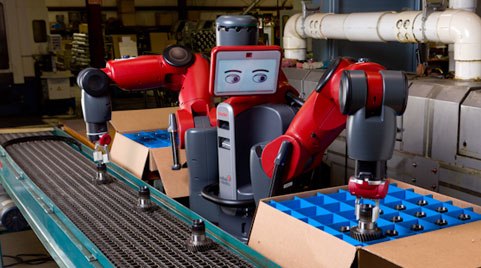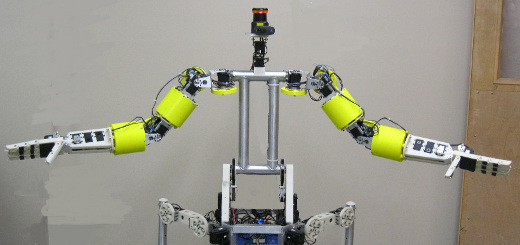New system aims to make robot mind control simple
It sounds funny to say it, but mind control is nothing new in the world of robotics. Researchers have been working on brain-controlled prosthetics for years, and lately we’ve been starting to see some impressive results.
However, Dean Aslam, a professor of electrical and computer engineering at Michigan State University and IEEE Senior Member, has developed an inexpensive, non-invasive system for monitoring brainwaves that could help bring mind-control to the masses.
The key is a single-electrode EEG sensor originally designed by a company called NeuroSky for toys. Aslam and his team studied the technology and began to create their own system by miniaturizing the EEG sensor and 3D printing the system packaging. They developed a Microsystem using commercial chips to amplify the signal, separate it and perform various calculations, which they integrated with a battery and the EEG sensor into a standard painter’s cap. A ground connection is attached to the user’s earlobe.
With the Microsystem, users can control wirelessly connected systems by changing what Aslam calls their “attention level” or “meditation level” as well as by blinking their eyes.
The big advantage of this system over others is its simplicity and cost. Normally, brain waves are measured using a number of electrodes, ranging from 41 to 64, which are placed on the head at different positions. That added complexity comes with a cost.
“Multiple electrode systems are more expensive — thousands of dollars,” Aslam says. “The single electrode systems — especially the one that we have developed — can be as inexpensive as maybe 10, 20 dollars. Typically maybe 50 dollars.”
The systems are also non-invasive, since they are able to read very weak electrical signals from the forehead, in the range of 10 to 100 microvolts.
Those two things together provide a system that is both affordable and flexible. Aslam says that in addition to allowing users to control artificial limbs, unmanned aerial vehicles or their new smart homes, a major benefit of the technology could be in personal heath care. For instance, the system can be used as a sleep monitor, measuring deep sleep, REM sleep and how often you wake up. And Aslam says the possibilities go well beyond that.
“The human brain is a collection of how we feel,” he notes. “If one can monitor the brainwave 24 hours a day, we can have personal monitoring of state of mind, state of body. In the near future, we’ll have devices that will monitor the brain in a way that we can estimate happiness.”
Aslam has been in contact with researchers who study neurodisorders, such as Parkinson’s and Alzheimer’s, as well as those who look at the issues facing the elderly, like dementia. Both are interested in the possible applications of the brainwave technology.
Below is a video of the technology in action.



